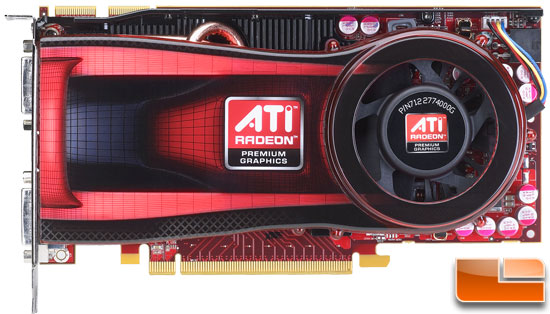ATI Radeon HD 4770 512MB Video Card Review
The Radeon HD 4770 512MB

The card that I will be showing you today is the reference Radeon HD 4770, which is a dual-slot graphics card that measures in at 8.25″ in length.

The Radeon HD 4770 has a pair of dual-link DVI outputs (both support DVI-to-HDMI adapters) and a single HDTV dongle style connection.

The back of the Radeon HD 4770 has no memory ICs located on it and is pretty bare as you can see from the image above.

Along the top edge of the PCB are two CrossFire interconnects that can be used for either CrossFire or CrossFire X. That means you can pair up to four ATI Radeon HD video cards together in order to get the best graphics performance possible.

When it comes to power requirements, the Radeon HD 4770 512MB video card has just a single 6-pin PCIe power header. The Radeon HD 4770 512MB has an average board power of just 80W, so the 6-pin power header is more than enough additional power for this graphics card.

The Radeon HD 4770 512MB video card is something new, so I figured we’d take it apart to see what is under the cooling system. This card features a 40nm GPU, but even though this is the smallest process technology ever used on a GPU it still has a fairly good sized dual heatpipe heat sink that can be seen above. The Radeon HD 4770 features a 4-pin cooling fan that blows air through a decent number of cooling fins and out the rear of the graphics card. It should be noted that with the heat sink removed there is still a memory cooler / reinforcement bar on our reference Radeon HD 4770 that has thermal pads to help cool the 512MB of GDDR5 memory and keep the card strong.

The eight Qimonda GDDR5s were not photogenic, but they were found to be part number IDGV51-05A1F1C-40X, which are 512MBit GDDR5 Graphics ICs. The Radeon HD 4770 memory clock operates at 800MHz, but these memory IC’s are certified at 1000MHz for command frequency. Looks like the reference Radeon HD 4770 should be a fairly good overclocker.

The new 40nm die is much smaller than the US quarter piece and is made by TSMC over in Taiwan as you can see by the markings in the image above.

The Radeon HD 4770 uses the RV740 and the picture above is a wafer of RV740’s. With the smaller 40nm die size AMD is able to get more GPU’s per wafer, which helps reduces production costs. This translates into lower prices and one of the reasons the Radeon HD 4770 retails for $109 with a $10 rebate right now.

Comments are closed.